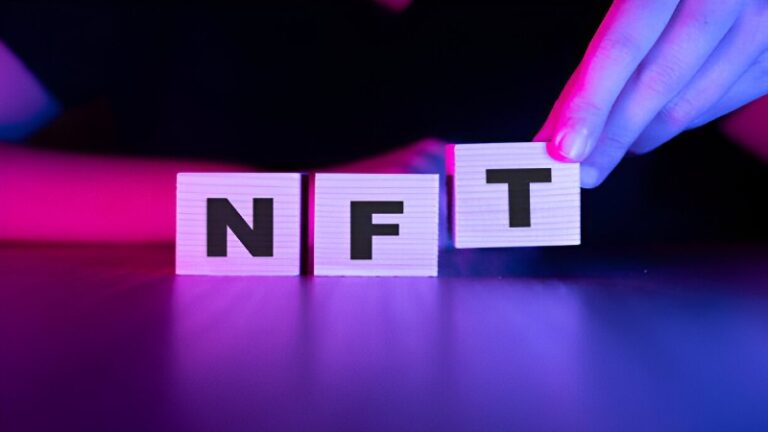The digital realm has consistently pushed the boundaries of what’s possible, and few innovations highlight this more profoundly than Digital Collectibles & NFTs. These Non-Fungible Tokens have fundamentally reshaped how we perceive and prove ownership in the virtual world, transforming everything from art and music to gaming and real estate. In 2025, the initial speculative frenzy surrounding NFTs has matured into a focused pursuit of utility, cementing their role as an essential component of the burgeoning digital economy.
Unlike traditional digital files that can be infinitely replicated, NFTs provide irrefutable proof of authenticity and scarcity, turning pixels and code into verifiable assets. This evolution from simple digital images to complex, value-backed assets represents variations for creators, collectors, and investors alike. As our lives increasingly intertwine with virtual spaces, understanding Digital Collectibles & NFTs is no longer a niche interest; it’s a critical aspect of navigating the future of digital art ownership.
Understanding Non-Fungible Tokens (NFTs)
At its core, an NFT is a unique digital asset verified using blockchain technology. The non-fungible aspect is crucial, it means each token is one-of-a-kind and cannot be replaced by an identical item. Think of it like a unique piece of artwork versus interchangeable currency. One Bitcoin is always equivalent to another Bitcoin (fungible), but one specific NFT representing a digital painting is distinctly different from another NFT representing a piece of music (non-fungible).
The Maturation of Digital Collectibles
The journey of Digital Collectibles & NFTs has been a rollercoaster, from the record-breaking sales of 2021-2022 to a more utility-driven market in 2025. The initial speculative boom has given way to a landscape where practical applications are taking center stage.
- Art and Creativity: Artists continue to tokenize their work, gaining direct access to collectors and ensuring perpetual royalties on secondary sales. This empowers creators by cutting out traditional intermediaries and offering new, recurring revenue streams.
- Gaming Transformation: The play-to-earn model has evolved into play-and-own, where NFTs enhance gameplay by giving players true ownership of in-game assets. Items like skins, characters, and virtual land can be traded, sold, or even used across different games, creating thriving virtual economies.
- Music and Entertainment: Musicians and content creators are leveraging NFTs to offer exclusive digital albums, concert experiences, and behind-the-scenes content. This direct fan engagement fosters deeper connections and provides artists with innovative monetization avenues.
- Real Estate Revolution: Property tokenization is moving from concept to reality. Investors can now buy fractional shares of physical buildings or virtual land through NFTs, democratizing access to real estate investment and enhancing liquidity. This is enabling seamless peer-to-peer property transactions and reducing fraud through verifiable blockchain records.
- Beyond the Expected: NFTs are expanding into identity verification (digital diplomas, licenses), supply chain management (product provenance), and even event ticketing (secure, verifiable entry passes with perks).
Key Market Statistics (2025 Snapshot)
The NFT market, while more stable, continues to demonstrate significant activity and growth:
- Trading Volume: 2025 alone saw NFT trading volume hit $4.8 billion, a 45% increase from 2024.
- Sales Volume: Total NFT sales for 2024 amounted to $8.83 billion, marking a 1.1% year-on-year increase from 2023.
- Market Projections: The global NFT market is projected to grow to $84.13 billion by 2029 with a 3% annual growth rate, underscoring a shift towards practical utility.
- Leading Blockchain: Ethereum remains dominant, hosting 68% of NFT volume, but Solana is rapidly gaining traction due to lower transaction fees.
Challenges of Digital Art Ownership
Despite their immense potential, Digital Collectibles & NFTs still face significant hurdles that users and investors should be aware of:
- Market Volatility: While the market has matured, prices can still fluctuate dramatically. NFTs remain a high-risk investment, often driven by demand and community hype.
- Environmental Concerns: Historically, some blockchain networks (especially those using proof-of-work) consumed substantial energy. However, transitions to more energy-efficient systems like Ethereum’s proof-of-stake, and the rise of eco-friendly blockchains, are addressing these sustainability issues.
- Legal & Regulatory Ambiguity: The legal framework surrounding NFTs is still evolving. Questions about intellectual property rights, consumer protection, and what exactly constitutes ownership of a digital asset remain. Buyers should carefully understand the rights included with an NFT
- Scams and Fraud: The rapid growth of the NFT market has unfortunately attracted bad actors, leading to scams and rug pulls. Due diligence is paramount when engaging with Digital Collectibles & NFTs.
The Future Trajectory
The evolution of Digital Collectibles & NFTs is far from over. Exciting developments are emerging at the intersection of NFTs with other cutting-edge technologies:
- AI-Generated NFTs: Artificial Intelligence is revolutionizing digital art ownership by enabling the creation of unique, dynamic, and even interactive NFTs. AI algorithms can generate new art based on prompts, assist artists in refining creations, and even curate personalized collections, blurring the lines of traditional authorship.
- Metaverse Integration: NFTs are poised to be the backbone of the burgeoning metaverse, acting as proof of ownership for virtual real estate, avatars, clothing, and other digital goods that can be seamlessly transferred across different virtual worlds. Interoperability between metaverses is a key focus, allowing digital assets to travel with their owners.
- Hybrid NFTs and Real-World Assets (RWAs): A growing trend is the linking of digital NFTs to physical assets or experiences. This hybrid NFT approach allows for tokenized real estate, luxury goods, event tickets, and even academic credentials, bridging the gap between the digital and physical worlds and democratizing access to high-value assets.
- Fractional Ownership: Platforms are increasingly allowing fractional ownership of high-value NFTs, making previously inaccessible assets more attainable for a broader range of investors and increasing market liquidity.
Conclusion
Digital Collectibles & NFTs are no longer a fleeting fad; they represent a fundamental shift in how we conceive of and interact with digital ownership. They have laid the groundwork for a more transparent, decentralized, and creator-centric digital economy. While challenges around market volatility, regulation, and sustainability persist, the undeniable utility that NFTs now offer across various industries, from gaming and art to real estate and healthcare, signifies their enduring impact.
For anyone navigating the modern digital landscape – whether you’re an artist seeking new monetization models, a collector looking for verifiable digital assets, or simply a curious observer – understanding of Digital Collectibles & NFTs is essential. The future of digital art ownership is dynamic, innovative, and increasingly interwoven with these unique digital tokens. Embrace the evolution; the most exciting part of the NFT story is still being written.
Frequently Asked Questions (FAQs)
What are Digital Collectibles and how do NFTs enable their ownership?
Digital Collectibles are unique digital items like art, music, or in-game assets. NFTs (Non-Fungible Tokens) enable their ownership by providing a verifiable, immutable record of authenticity and ownership on a blockchain, distinguishing them from easily duplicated digital files.
How are NFTs being used beyond digital art? NFTs are now used in various industries, including gaming (in-game asset ownership), real estate (tokenized property shares), music (exclusive content and royalties), education (digital diplomas), and even healthcare (secure patient records).
What are the main risks associated with Digital Collectibles & NFTs?
Key risks include market volatility (prices can fluctuate dramatically), evolving legal and regulatory frameworks, and the potential for scams or fraud. It’s crucial to conduct thorough research before investing.
How do NFTs ensure the authenticity of digital art?
NFTs ensure authenticity through blockchain technology. Each NFT has unique metadata and an immutable transaction history recorded on a decentralized ledger, making it impossible to counterfeit or dispute ownership.
What is fractional ownership in the context of NFTs?
Fractional ownership allows a high-value NFT to be divided into smaller, more affordable shares, enabling multiple individuals to co-own a single digital asset. This democratizes access and can increase liquidity for expensive NFTs.
How are AI and the metaverse impacting the future of NFTs?
AI is being used to generate and curate NFTs, while the metaverse relies on NFTs for ownership of virtual land, avatars, and digital goods. This integration is creating more immersive and interactive digital experiences.


